|
Meet the Cunninghams . . .
A family bound by evil and the blood they have spilled. The large lodging-house they live in and operate on Artaud Avenue reeks of death, and the sins that remain trapped beneath the floorboards.
Ray Truman’s search for a killer leads him to the Cunningham’s house of horrors. What he finds there will ultimately lead him to regret ever meeting Caleb Cunningham and the deviant family that spawned him. The hunter becomes the hunted, as Truman digs deeper into the abyss that is the horrifying mind of the most dangerous psychopath he has ever met
Buy your copy!
Download at Smashwords (eBook)
Kindle Edition (eBook)
Nook Book (eBook)
Amazon
Barnes & Noble.com
Blood Related
Official Blood Related Website
“Dark and deeply disturbing.”
– Jonathan Nasaw, author of Fear Itself and The Girls He Adored.
“Blood Related is a nasty but nuanced take on the serial killer genre. Cook’s bruising tale of twin psychopaths who are as cold as mortuary slabs is not for the weak-kneed.”
– Laird Barron, author of Occultation and The Imago Sequence.
“A thought-provoking thriller.”
– Guy N Smith, author of Night of The Crabs and Deadbeat.
“Great – Riveting – Amazing – take your pick. I just read William Cook’s Blood Related for the second time. Both readings were followed with one thought, Wow. A horrific crime-filled tale of terror that makes us understand why we lock our doors at night, Blood Related is by far the best read I’ve experienced in years.”
– John Paul Allen, author of Monkey Love and Gifted Trust
“Blood Related is a terrifying psychological thriller. William Cook is an author to watch.”
– Mark Edward Hall, author of The Lost Village and The Holocaust Opera.
“William Cook makes serial killer fiction exciting again! Expert narrative, bursting with flare, originality, and enough passion and brutality that even a real-life serial killer will love this book . . . and it’s twisted and complex enough to make you question your own sanity after the first intense read.”
– Nicholas Grabowsky, best-selling author of Halloween IV and Everborn.
**********
For over two decades, Detective Ray Truman has been searching for the killer, or killers, who have terrorized Portvale. Headless corpses, their bodies mutilated and posed, have been turning up all over the industrial district near the docks. Young female prostitutes had been the killer’s victims of choice, but now other districts are reporting the gruesome discovery of decapitated bodies. It seems the killer has expanded his territory as more ‘nice girls’ feel the wrath of his terrible rage.
Meet the Cunninghams . . .
A family bound by evil and the blood they have spilled. The large lodging-house they live in and operate on Artaud Avenue reeks of death, and the sins that remain trapped beneath the floorboards.
Ray Truman’s search for a killer leads him to the Cunningham’s house of horrors. What he finds there will ultimately lead him to regret ever meeting Caleb Cunningham and the deviant family that spawned him. The hunter becomes the hunted, as Truman digs deeper into the abyss that is the horrifying mind of the most dangerous psychopath he has ever met.
Excerpt
Preface:
I met Charlie Cunningham while working as a court appointed psychiatrist, testifying to the defendant’s state of mind at a sentence review hearing. He was imprisoned for the homicide of a dispensary storeowner and was a prime suspect in the killings of at least two other people in the Portvale area. Cunningham was held as an inmate at a sanitarium after recently assaulting a group of fellow prisoners at Breakhouse Penitentiary. His behavior had deteriorated during his stay at the prison and had resulted in a severe psychotic breakdown, culminating with the assaults, hence the reason behind his transfer and my testimony. Dr Frederic Rimbaud, chief psychiatrist at Saint Michael Hospital for the Criminally Insane, passed on Charlie’s case notes to me with a warning that I should “take another case as this one [Cunningham] isn’t worth defending!”
At the time, Charlie had not gained notoriety as a suspected serial killer. However, his psychiatric assessments, coupled with his criminal background, confirmed his capacity for committing multiple murders. After numerous interviews, I concluded that he was a high-risk violent serial offender of the disorganized type, with full-blown antisocial personality disorder. It was my opinion that Charlie Cunningham was one of the most dangerous Antisocial Personality types I had encountered in all my twenty years of forensic psychiatry. That was, before I met his twin brother Caleb.
I first encountered Caleb while visiting his brother Charlie at the asylum. It was a typical ‘non-contact’ visiting room for maximum-security inmates, or ‘patients’ as the staff liked to call them. Bulletproof windows separated visitors from the prisoners in the small concrete booths. The unmistakable bright orange jumpsuits of the prisoners, contrasted sharply with the gloomy concrete and steel environment. A plain wooden seat was provided for the visitor and an intercom on the wall allowed communication. A thick reinforced glass window ran the length of the visiting room wall and separated the area from the waiting room, where the visitors patiently sat while waiting their turn to see family and friends on the other side.
As I gathered my things and said goodbye to Charlie, I saw Caleb enter the visiting room. I knew it was Caleb as I was immediately struck by his likeness to his twin brother, to the point that I thought it was Charlie for a moment. He was tall although not as muscular as Charlie, but his shaved head and cold dark eyes combined with his chiseled facial features, mirrored his brother’s image. It was as if Charlie had materialized from one side of the room to the other and I found myself involuntarily glancing back at the bulletproof window, to make sure Charlie was still sitting there. I hesitated for a brief moment as I contemplated speaking with Caleb before leaving, thinking he may be of some use in providing details regarding his brother’s background and current psychological state.
Caleb looked at me as he waited for the guard to show him to the seat in front of Charlie’s booth. His dark eyes bore deep into mine, his gaze unflinching as if he had read my mind and was daring me to approach him. Slightly unnerved, I decided I had all the information I needed and approached the exit once more, forcing myself to think about my next appointment as I left the gray walls of the asylum.
Charlie’s sentence-review hearing was eventually held with no change to the maximum sentence he had received. My testimony allowed no leniency for Charlie and once the sentence was passed, I thought it would be the last I would see of the Cunninghams. Over the next few months I worked on a number of high-profile cases, which resulted in more public exposure for my small clinic, to the point where I had to employ staff to help deal with a burgeoning client-list. Despite my hectic schedule I could not forget about the Cunningham case, the disturbing content and graphic details of my interviews with Charlie lingered in my consciousness. I found myself reviewing my case notes after-hours, fascinated and revolted by the litany of violence I had recorded. A growing sense of unease had me wondering if I had been privy to information best passed on to the appropriate authorities.
Reviewing the court documents, including notes from previous psychiatric assessments, witness statements and police records, I had pieced together a picture of a horrific family upbringing for the twin brothers. I used my professional experience and training to corroborate Charlie’s scattered retellings of his past. I remembered that he betrayed little emotion apart from when he relayed his family experiences – especially the abuse he suffered at the hands of his violent father and over-domineering mother. He had remained silent about his brother Caleb and it was in this omission that I realized my professional interest had been piqued.
Who was Caleb? Was Charlie afraid of his own sibling? Realizing the futility of my curiosity, I watched as the clock on the wall registered midnight’s approach. Sitting alone at my desk, overworked and tired, I decided I needed a holiday. And that, I thought, would be the last time I would have to think about Charlie Cunningham and his twisted kin as I booked myself an online holiday package.
A month later, I had returned from vacation and settled in to the backlog of work that awaited me. It was shaping up to be one of my busiest years what with an expansive client list and various projects that threatened to push my workload to breaking point. The Cunningham case was the farthest thing from my mind when Caleb himself approached me in my downtown office one bleak winter’s morning. When he first entered my office, I did not recognize him as a good year had passed since I had last seen him and his brother. His eyes however, remained unchanged and the memory of him and Charlie came flooding back to me, as I hesitantly ushered him into the office. Those dark eyes belied a malevolence that instantly made me think of Charles Manson’s psychotic gaze. Once again, Caleb had rattled me with his presence but my curiosity, tempered with my professional training, outweighed the uneasy feeling that enveloped me as he made himself comfortable in one of the chairs in front of my desk.
After advising Caleb that I was no longer working as a defense witness and that I hadn’t spoken to Charlie since his trial, I told him that I now had a private practice and worked primarily as a consultant to local and federal law enforcement authorities. Caleb explained that he knew all about my practice and involvement with a number of high profile cases. He had read my books on Abnormal Psychology and Forensic Pathology and stated that was why he wanted to talk to me. He felt I might be able to offer him some insight into his own psychological state of mind. I explained that I was very busy but somehow, he managed to convince me that what he had to say would be worth my while. I don’t usually work pro-bono but I found myself making an exception as I offered my services to Caleb.
I had unanswered questions about the Cunninghams and a professional interest in the genetic transition of psychosis, which was evident in my analysis of Charlie all those years ago. Despite agreeing to talk with Caleb, I had a nagging sense of unease as it occurred to me that he had obviously been following my career with some interest for a long time. Misgivings aside, my professional curiosity got the better of me and after a brief exchange of formalities, we began to talk.
Over the course of our meetings, it became apparent that Caleb had an agenda and after reassurance that I would keep what he told me confidential, he began to talk. It was obvious he had never talked to anyone with such apparent honesty. At times, it seemed he could not help himself, as the floodgates of his past opened, as he retold the horrors of his family life. During our first session, he unleashed a torrent of recantations of violent experiences. What had started out as an in-depth look into his and Charlie’s childhood, suddenly switched to a gruesome confessional.
After convincing him of my adherence to a strict confidentiality code, we delved deeper into his back-catalogue of violence. I became fascinated with the nature of his psychology and found him to be a psychiatric anomaly, beyond definitive analysis or diagnosis. Aspects of his personality would point to a symptom or criteria for a particular type of disorder, only to morph and combine to produce a unique psychological characteristic, near impossible to pigeonhole.
As the weekly sessions progressed, a picture began to emerge of a dichotomous personality: a severe dissociative identity disorder similar to the stereotypical ‘multiple-personality’ type but unique, in that Caleb was fully in control of all aspects of his behavior and thought processes. In this respect, he was nothing like his psychotic brother who displayed all the classic hallmark symptoms of a disorganized antisocial personality coupled with violent behavioral problems.
Despite his ability to control his behavior, I was left in no doubt as to the psychopathological nature of Caleb Cunningham. I had long held the conviction that the concept of ‘evil’ was an almost meaningless abstract term, coined for those things beyond human comprehension. With Caleb, the word ‘evil’ became synonymous with my assessment of his character. In fact, I felt quite disturbed as much by his words, as by his presence. After attending regular sessions for three months, he finally disappeared. It was with mixed regret and relief that I closed my considerable case file on Caleb. Despite our intensive sessions, I realized I was still miles away from fully understanding his twisted psyche and at a loss to understand why he had actually told me all that he had. He had put me in the uncomfortable position of providing me with information that was potentially incriminating and revealing. I felt much like I imagined a priest to feel, after hearing a confession too inhumanly terrible to keep secret.
As most people know, ‘doctor-patient confidentiality’ is a mainstay of psychiatric practice, but after the end of my sessions with Caleb Cunningham, I had sufficient cause to betray this ethical basis. I would later receive correspondence from Caleb, which in turn prompted me to investigate his claims further. The manuscript that I put before you is as factual an account as possible, of the Cunningham family’s reign of terror, and of the twisted psychology of a very dangerous human being.
With the passage of time and the confirmation of his crimes, Caleb Cunningham has proved to be an enigma amongst modern serial killers. A psychopath who alters his Modus Operandi (M.O.) at will and can adapt his pattern behavior to suit. He is essentially, an intelligent predator that refuses to conform to any of the rules applied to his notorious predecessors. In one of my interviews with him, Caleb brazenly admitted that he had “murdered over one hundred men and women”. Antisocial Personality Disorder types are notorious liars but something about his tone, combined with his family history, made me take him seriously. He was the prime suspect in two separate national serial killing investigations and is currently on Interpol’s Top 10 Most Wanted List as a fugitive. Apart from early convictions for petty larceny and burglary offences and a brief term of imprisonment, Caleb has managed to evade conviction for any of the serious offences he is suspected of.
What you are about to read is an account of the diabolical workings of a dangerous, psychopathic killer. Most of the text in this narrative is transcribed verbatim from taped accounts of Caleb’s and his brother’s experiences. More obscure aspects of their twisted lives have had to be pieced together from Caleb’s recollections, alongside the Portvale Serial Killer Task Force lead investigator Ray Truman’s copious notes and associated media reports. Gathered from Truman’s own police journals and case files, I have pieced together his story as accurately as possible thanks to his helpful colleagues at the Portvale Police Precinct.
Like any true story, there is an element of the ‘perceived truth’ used in the retelling of the tale. This arises from the personal accounts and biases of those who write and interpret the evidence laid out before them. I too interpret the facts to the best of my abilities but realize that integrity is sometimes not enough to reveal absolute truth. Hence, my apologies for any factual discrepancies that may come to light in the future as this story reaches its end, as presently it has no such ending.
Finally, at the risk of professional suicide, I have an admission to make. I betrayed my client’s trust as my conscience overwhelmed my code of practice with the weight of the horrific detail of Caleb Cunningham’s darkest confidences. After gaining official police verification of details of unsolved homicides in the Portvale region, compared with the transcribed information Caleb provided, it is my belief that Caleb Cunningham is quite possibly the most dangerous man alive.
For he is still alive – somewhere out there, surviving on his Machiavellian intelligence while he channels his seething rage and lust for death. My last communiqué from him; one of the countless cryptic letters I received, is included with this publication of his journal entries and case notes. His letters display his ability to communicate both his intellect and his capacity for unspeakable evil in the same breath, much like his ‘art’ – the aesthetic rendering of his many victims.
I hope that the publication of these personal writings and case notes will illuminate one of the most elusive, bizarre and enigmatic killers of this century and the family that spawned him. After informing him of my decision to share with the federal authorities information I had gathered from our conversations, he gave me his ‘permission’ to tell his story to the world. The implicit threat of his return to Portvale engendered fear in the wake of my decision. I have no doubt that he will read this and that my life will be in imminent danger because of this publication.
The corroboration of the federal authorities, that what he told me was pure fact, leave me with the hope that this account will turn over new stones perhaps otherwise best left unturned. I have sufficient doubt in the truth of his account, in that his ‘estimate’ of the victims he murdered is a lesser percentage of the true and actual total.
I read the papers and have access to the online law-enforcement log-files, both nationally and internationally, of unsolved homicides. I see his signature everywhere. It is in the names of the victims, their age and the ferocity of the crimes. They are his calling cards to me – his ‘art’ is alive and lives forever. This is his story.
Dr. Mary Brunswick, PHD
Prologue:
Charlie has big plans for me. He’s thinking crazy thoughts and talking crazy talk. He keeps telling me about his recurring visions and his ‘mission,’ apparently he has occasion to talk to God. During one of these conversations, God granted him absolution in hell, free from the tyranny of everyday pain and suffering, if Charlie did his bidding. This particular vision also revealed that God and Satan were the same, as was heaven and hell. For Charlie, he saw this as a sign that he would be sitting at Satan’s side on a throne made of human bones, once he was mortally dead.
He would be a god.
I could tell he was delusional.
He was gone.
I knew this because there was no God.
God was dead and so was Charlie.
I hear Charlie’s voice now, clear as a bell. My consciousness clears and my surroundings come into sharp focus. I see his face clearly in my mind. I shake my head, trying to rid myself of his image. I wrap my bleeding fist in a towel and step gingerly over the broken shards of mirror littering the wet tiles on the bathroom floor. I make my way to the kitchen and search the cupboards, for some tape or band-aids, to stem the flow of blood from the lacerations across my throbbing knuckles.
“God,” Charlie whispers to me, “has given me life – to do my deeds upon this earth before he takes me to the next level.”
“Another life,” he continues, “will not allow me the freedom of choice you have with your future Caleb. Some things we cannot change. Some lives are not led by natural laws, but by unnatural processes – events.”
“My life, your life . . .” Charlie says, “is a road map to hell.”
I remember the last time I looked in his eyes when he was alive. He was crazy then and the voice in my head shakes with equal insanity, as an image of him floats before my eyes. His face appears gaunt, skeletal. The vision ebbs in and out of focus as I start to tremble with a mixture of naked coldness and fear. I remember him as if he is with me now and he is, in his own twisted way. My mind reels with tangents and the bending of physical laws.
He used to seem very confused to me.
He now seems very logical to me.
He still seems very dangerous to me.
He is my twin brother and he has returned home.
I see him in my own eyes.
I feel that he is now part of me.
Blood related.
The missing piece of the jigsaw puzzle has been found. It is a moment of realization that we are two parts of the same equation; standing there alone in a stranger’s house, nude as a newborn, thoughts swirling through my adrenaline-charged brain.
I realize that with the puzzle complete – the revealed image is far more bloody than romanticized, like two halves of something that shouldn’t be together. More like a vision of apocalyptic proportions. Despite my realization, I feel like shit more than ever.
Back in the bathroom I look once again at my reflection in the broken shards of mirror on the floor – just before I smash myself in the face with my fist. I hear Charlie gasp as I do. The sum of our union is chaos. Death. Destruction. Violence. And loneliness.
We are hollow men.
Empty men.
The walking dead.
We are one.
With some ammonia-saturated cleaning spray, I spray the droplets of blood on the remains of the cabinet mirror, vainly attempting to clean my presence from the room. I look at the floor covered in bloody footprints, my bloody footprints. I look at the woman in the bathtub, her glazed lifeless eyes staring vacantly at me. Her bruised neck set at a strange angle. One bare arm dangles over the side of the porcelain tub, her alabaster fingers delicately lay palm up on the floor, in a glistening pool of dark blood. A bare breast exposed, floats whitely like an island of chalk amongst the maroon waters in the tub. At this point, I give up any attempts to conceal my indiscretions.
I look through the doorway at the clock on the mantle in the living room. It’s time to go and I’ve come ill prepared, this was after all a ‘crime of opportunity’ as they sometimes are. I complete my task and take my trophy from the body, arranging the remains in my careful way. I remove my clothes from my backpack and replace them with the head wrapped in a plastic bag. I wipe the remaining smears of congealing blood from my body, careful not to get the viscous liquid on anything else as I shed my unease and dress hurriedly in the hallway. All the while, my gaze is fixated on the broken work in the bathroom. She appears to move as her limbs stiffen a fraction with the onset of rigor mortis.
My heart starts beating again and I think of Lucille as I make my way to the gas hob in the kitchen. I check that all the windows are shut tight, light a candle in the living room and in the hallway, and turn all the gas rings to high. In my head, Charlie remains quiet as I gently close and lock the back door, before making my way across the yard and over the fence at the rear of the property.
I walk slowly down the poorly lit alley that runs behind the North-Shore Boulevard. It takes approximately six minutes of pacing my steps in the dark night, counting the seconds as I go, until I hear a muffled thump behind me as the house explodes in a ball of flame. Charlie starts to laugh, a frightening maniacal noise, which sounds like someone hacking at a tree-trunk with an axe. It only takes a brief minute to realize that the crazed laughter is not Charlie’s, but my own.
|




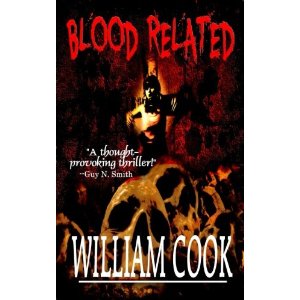

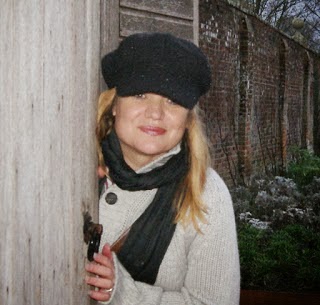

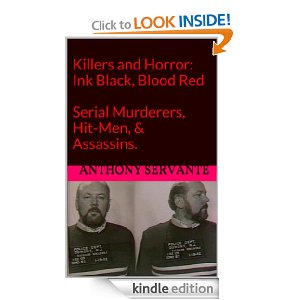
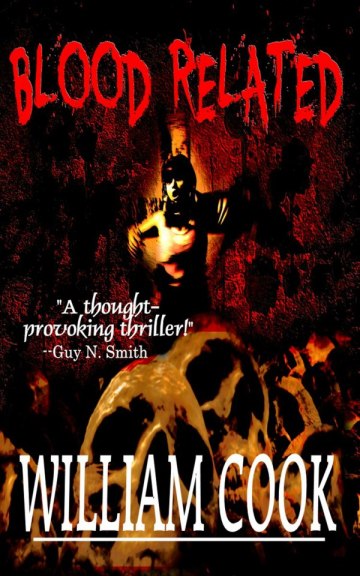




















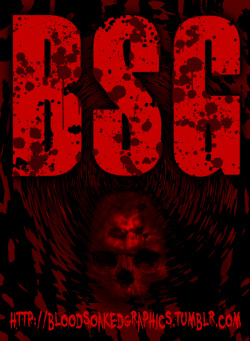
You must be logged in to post a comment.